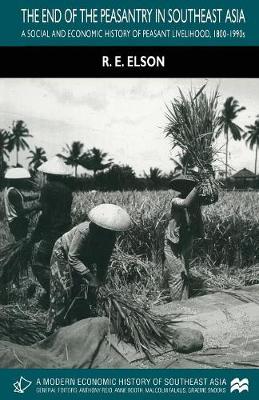A Modern Economic History of Southeast Asia
1 total work
This book analyses the changing context and conditions of production and livelihood amongst Southeast Asia's peasants since the beginning of the nineteenth century. It argues that with demographic growth and the nineteenth century development of great global markets based on small-scale production, the size and economic significance of peasantries throughout the region was magnified. However, such changes brought with them new forces - stronger states, more regular legal systems, a revolution in communications, intensive commercialisation - which themselves worked to undermine the foundations of peasant society and, eventually, to transform peasants into farmers, workers and citizens.
